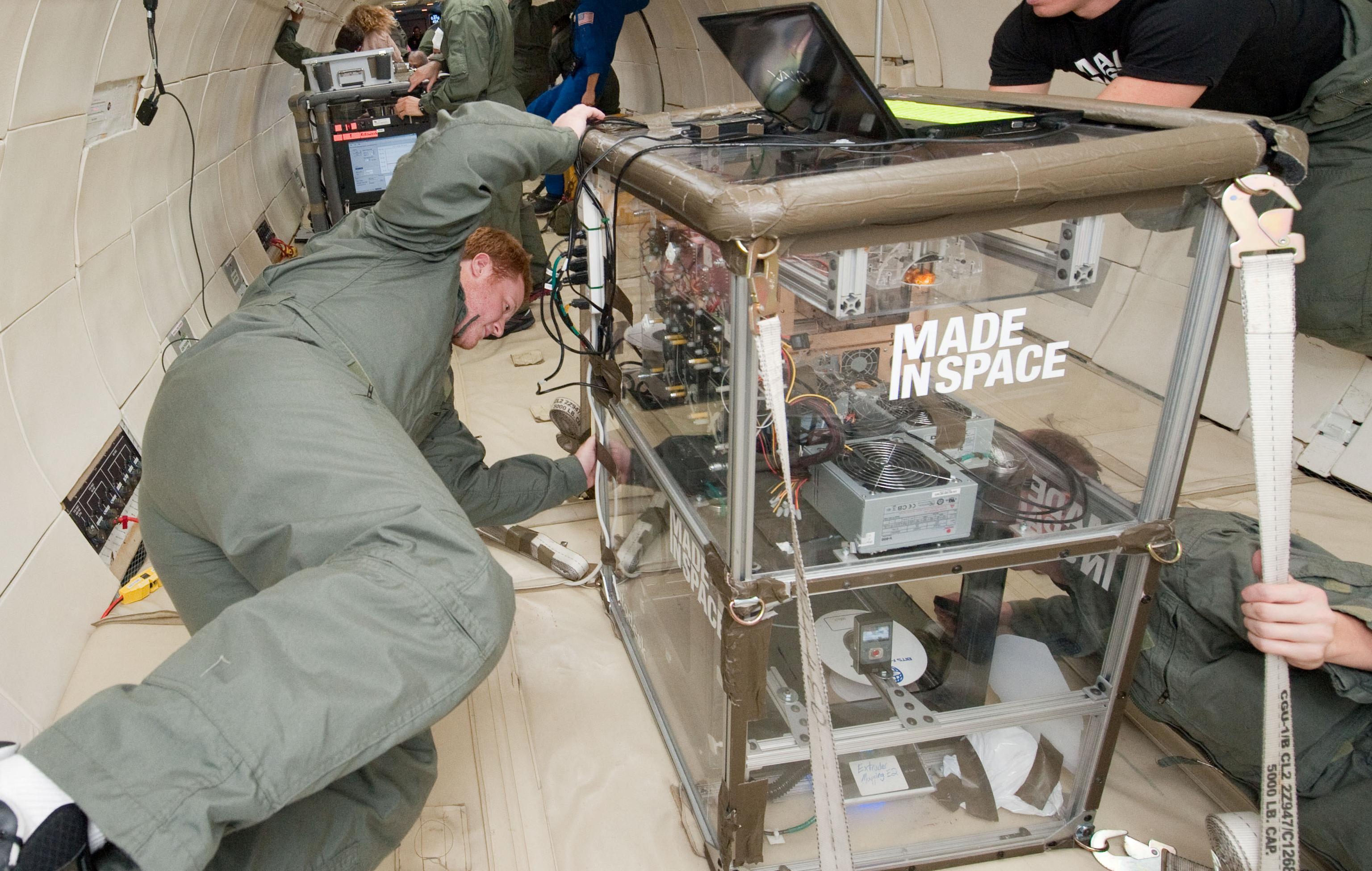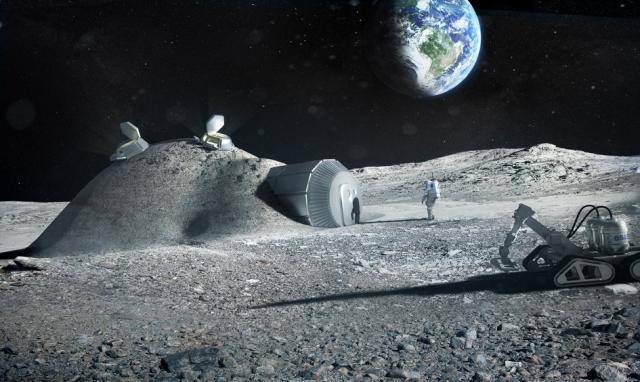NASA’s In-space 3D Printer Launches Tomorrow – The Unheard of Inside Scoop & Ultimate Goal of 3D Printing on Mars
NASA’s Niki Werkheiser’s prediction for 3D Printing in space within 10 Years:
“On Mars building everything from hand tools to radiation shielding habitats – and maybe even the engines you need to travel throughout the cosmos!”
3D Printing has become quite the phenomenon here on Earth over the past few years. While the technology has been available for over 25 years in one form or another, just recently has it caught on among small businesses and at-home users. It provides so much potential to the future of manufacturing, as well as possibilities for one day providing complete self-sufficiency. There is no doubt that the technology will be one to watch in the coming months, years and decades ahead, as new and improved methods of 3D printing become available, not only for large corporations but also at the consumer level. It was only a matter of time before 3D printers would make their way into outer space. While the world has been talking about a project that NASA and Made In Space have been planning for quite some time now, in which they are sending a zero-gravity 3D printer to the International Space Station, very few know what the ultimate goal of this project is. It may surprise you!
HISTORY TO BE MADE THIS FRIDAY
This Saturday, September 20th at 2:16 AM ET, 3D printing will have a chance to prove that it is not only a technology that will improve life here on Earth, but also show its potential uses for space travel and future colonization of planets and asteroids. Launching to the International Space Station this week, will be a 3D printer manufactured by a company called Made In Space. It’s goal? To test out the capabilities of 3D printing objects in zero gravity conditions.
The initial launch of this Made In Space 3D printer will provide useful data, and show with 100% certainty that it is capable of 3D printing objects outside of the earth’s gravitational pull. However, it is only the beginning of the incredible events that may culminate shortly thereafter.
“NASA and the company Made in Space, Inc. have flown 3D Printers on parabolic flights (i.e. the “vomit comet”) and all data shows that the print quality is equitable to those performed with Earth’s gravity,” explained NASA’s 3D Printing In Zero-G Project Manager, Niki Werkheiser to 3DPrint.com. “However, the parabolic flights only provided 20-30 second spurts of microgravity. Even a small part, such as a clip, takes 15 – 20 minutes. Therefore, the International Space Station (ISS) is the only platform in the universe where we can print a completed part in microgravity.”
THE GRAND PLAN: 3D PRINTING TO COLONIZE MARS AND PROVIDE FOR DEEP SPACE TRAVEL
While, most people see this as a tremendous breakthrough, which it certainly is, this is only the beginning of what NASA’s 3D Printing In Zero-G Project Manager, Niki Werkheiser tells 3DPrint.com will lead us to deep-space human exploration as well as colonization of other planets and asteroids.
This first initial phase of this grander plan of colonizing planets and providing for future deep-space travel will focus on testing to make sure that the 3D printer is able to print objects in space, under microgravity conditions. Werkheiser tell us that if all goes as planned the next steps in the process are where it will really get interesting.
“This technology demonstration is laying the groundwork for the next generation printer, known as the Additive Manufacturing Facility (AMF),” she explained. “It will have a larger build volume, more sophisticated software, and print with stronger plastics. The first printer we’re sending up, prints with ABS plastic. We are looking at other materials, such as Ultem 9085 and PEEK for the next generation printer. NASA also awarded 2014 Phase I Small Business Innovation and Research (SBIR) awards to two companies (Made in Space, Inc. and Tethers Unlimited) to develop an in-space Recycler. The Recycler will turn the printed plastic parts back into useable feedstock. We hope to fly a Recycler Tech Demo in the future to demonstrate sustainability for in-space manufacturing, which will be imperative for exploration missions to further destinations such as Mars.”
The Recycler will hopefully be capable of taking used food containers/wrappings, and turning it into material that can then be used to 3D print out necessary objects. It will also be able to recycle old parts and turn them into new ones. This will go a long way in preventing the need for the shipment of supplies to the space station, which can take 6 months or longer, and ultimately to asteroids and planets like Mars.
NASA also currently has an In-space Manufacturing Initiative which includes areas of technological development encompassing the 3D printing of electronics, 3D printing with metals, 3D printing of external structures in-space, as well as additive repair technology. These are all things that the agency is looking to develop, not only for space, but for here on Earth as well. The most intriguing part of this is that NASA seems to have a master plan of bringing this technology to other planets, for the colonization of those worlds. In speaking of the agency’s In-Space Manufacturing Initiative, Werkheiser mentioned some pretty fascinating things:
“This also includes Additive Construction for large-scale structures such as radiation shielding and habitats, landing pads, and storage shelters,” she told us. “NASA Marshall Space Flight Center has a Contour Crafting machine, which is a current technology used to 3D Print large scale structures. There are ground tests using lunar and Martian regolith simulates as the raw material for building these larger structures. You can imagine how cool it will be to one day live on Mars and 3D Print the parts or structures you need from the in-situ resources available!”
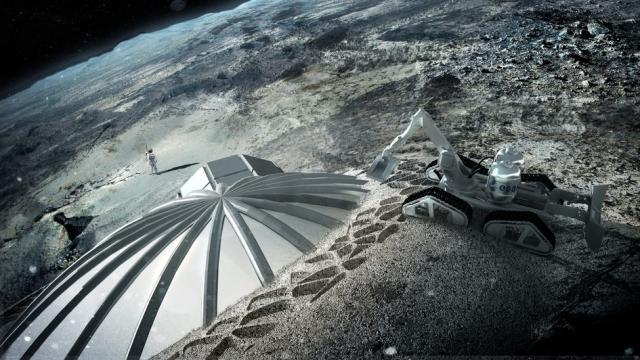 Of course it has been talked about for decades, that one day we may eventually be living on Mars, but it seems as though NASA is closer than most of us have ever imagined. How close? When I inquired as to where Werkheiser sees 3D printing in ten years from now, she answered:
Of course it has been talked about for decades, that one day we may eventually be living on Mars, but it seems as though NASA is closer than most of us have ever imagined. How close? When I inquired as to where Werkheiser sees 3D printing in ten years from now, she answered:
“On Mars building everything from hand tools to radiation shielding habitats – and maybe even the engines you need to travel throughout the cosmos!”
She believes that this first step, which will be taking place on September 20th, will be a historic one towards completely disrupting the severely constrained supply chain model that we have been using since the beginning of the human space program. “We have made it work up until now, but for longer-term, further out destinations, this model is simply not feasible,” she explained. “The capability to make what you need, when you need it, wherever you might be has larger implications than I believe we can even imagine today. This technology demonstration is the first step toward realizing a microgravity 3D print-on-demand ‘machine shop’ for long-duration space missions — a vital component for sustainable, deep-space human exploration, where there is extremely limited availability of Earth-based logistics support.”
TAKING A STEP BACK
Taking a step back, and forgetting the excitement portrayed by the fact that the ultimate goal here is to eventually colonize other planets through the use of 3D printers, we must also look at some of the significant methodologies that we will be learning from this first endeavor that begins tomorrow.
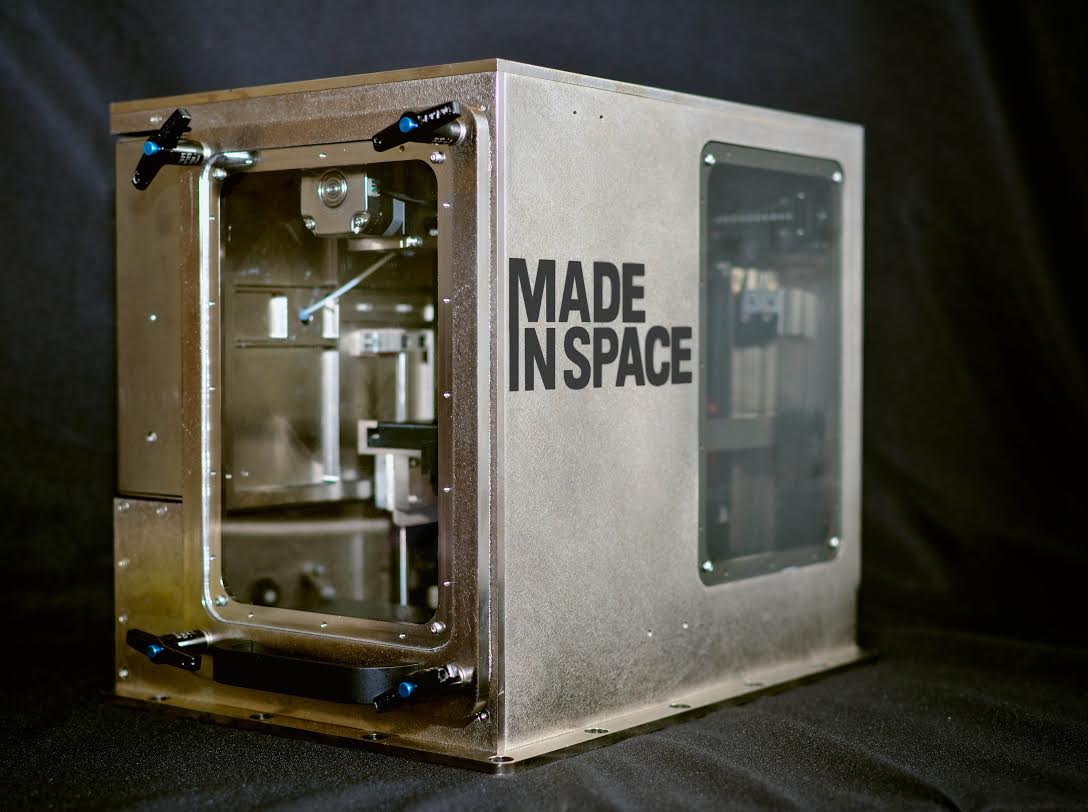 Like mentioned above, the Made In Space 3D printer has been tested in zero-gravity situations, but only for 20-30 seconds at a time. Having the printer located in space for a prolonged time will allow for the printing and testing of various objects. It will also allow scientists, as well us ordinary people like you and me, to watch the printer run in real time (or at least close to it). NASA plans to live-stream video of the printer for us all to see. In fact, the entire mission, if you would call it that, will utilize various sources of social media, in hopes of retrieving new ideas, new designs to print, and allowing the world to contemplate different scenarios. The Made In Space 3D printer will have its own Twitter and Facebook accounts, which it will be frequently tweeting from, answering questions, and posting photos with. NASA will be welcoming ideas and design files for testing from individuals, universities and companies from around the world.
Like mentioned above, the Made In Space 3D printer has been tested in zero-gravity situations, but only for 20-30 seconds at a time. Having the printer located in space for a prolonged time will allow for the printing and testing of various objects. It will also allow scientists, as well us ordinary people like you and me, to watch the printer run in real time (or at least close to it). NASA plans to live-stream video of the printer for us all to see. In fact, the entire mission, if you would call it that, will utilize various sources of social media, in hopes of retrieving new ideas, new designs to print, and allowing the world to contemplate different scenarios. The Made In Space 3D printer will have its own Twitter and Facebook accounts, which it will be frequently tweeting from, answering questions, and posting photos with. NASA will be welcoming ideas and design files for testing from individuals, universities and companies from around the world.
For Made In Space, they had many obstacles to overcome. These included the obvious one of printing in zero-gravity. Typical 3D printers rely heavily on the fact that materials must be moved through the printers with the help of gravity. When gravity is absent, the entire engineering of the printer must change. Another issue that Made In Space needed to account for was the fact that the oxygen within the space station is recycled. This means that no contaminants could be present. For those of us who have used 3D printers in the past, we know that the extrusion of plastics, especially that of ABS, which is frequently used in consumer-level 3D printers, as well as on this printer, can give off toxic fumes. While probably not all that big of a deal at home, where we have the benefit of an unlimited supply of oxygen, this isn’t the case in space. Made In Space had to ensure that their 3D printer was 100% emissions free, and it was put through various tests by NASA to make sure that this was the case.
Some of the first objects that will be printed in space, will actually be replacement parts for the printer itself, which is made up of a high percentage of parts that can be self-replicated. Then astronauts will take these parts and try to replace the originals on the printer. This will also prove to be one of the first tests to see exactly how the printer works in a long term zero-gravity situation. Quite frankly, no one knows for sure what the results will be. It’s possible, though unlikely, that the printer will not be able to finalize prints. It is also possible that the lack of gravity could create better, more precise parts. Only the results will tell us for sure.
3D PRINTING IS LIMITED BY EARTH’S GRAVITY NOT BY SPACE’S LACK THEREOF
While most people see 3D printing in space as a limiting factor on the technology, this in fact is not exactly true. Actually Earth’s gravity is more of a limiting factor on the technology than the lack of gravity that we see in space is. Just step back and think about it for a moment.
When we 3D print objects here on Earth, everything is based on the fact that the printed structure must be able to support its own weight. Most of us simply ignore this fact, since we are all conditioned to understand the laws of gravity. However, gravity has a tremendous effect on objects. Every object that we print must support its own weight, or else it simply couldn’t be printed. When sending objects into space, they actually need to support more than their own weight, since they are under a large g-force. Humans usually travel to space with a maximum g-force of 3gs. When objects are sent to space without humans onboard, there are even higher forces of gravity in play. This means that many objects 3D printed here on earth wouldn’t even make it to space without being significantly deformed.
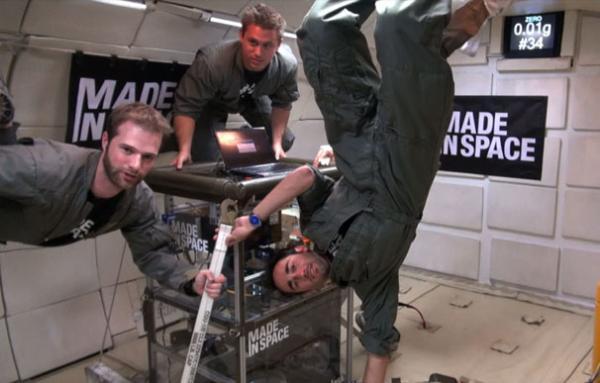 Now, what happens when you forego gravity altogether? What happens when you actually 3D print an object in zero-gravity, and that object never requires any weight to be put on it, or any gravity to effect it? The answer? The creation of new objects emerge; objects that no longer need to abide by the laws of gravity here on Earth. This is one reason why tomorrow’s launch of the Made In Space 3D printer is so significant. It will allow for the 3D printing of entirely new designs, those which will never need to face the wrath of gravity.
Now, what happens when you forego gravity altogether? What happens when you actually 3D print an object in zero-gravity, and that object never requires any weight to be put on it, or any gravity to effect it? The answer? The creation of new objects emerge; objects that no longer need to abide by the laws of gravity here on Earth. This is one reason why tomorrow’s launch of the Made In Space 3D printer is so significant. It will allow for the 3D printing of entirely new designs, those which will never need to face the wrath of gravity.
NASA and Made In Space are looking for designers, architects, physicists, engineers, and just normal people, to come up with ideas and designs for new objects that will contribute to future space missions, based on these new laws of physics that don’t apply here to Earth. It will certainly be interesting to see what ideas people come up with, and how much they differ from objects we have here on Earth.
3D Printing has become quite the sensation here on this planet, and only time will tell if it can also succeed outside of this planet’s gravitational pull. If all goes as planned, perhaps one day, in the very near future, we could be 3D printing everything needed to survive on other planets and asteroids, and one day future generations will look back and see September 20th as being one of the most historic days in the history of this world SOLAR SYSTEM.
Either way, this is a huge tribute to how a government agency like NASA has been able to cooperate with a small business to create a machine that neither one of them could have come up with on their own.
“This project is an ideal example of how government and small businesses can work together to develop new technologies,” said Werkheiser. “In this example, NASA and Made in Space, Inc. worked hand-in-hand and that partnership culminated in the rapid development of a brand new technology for in-space applications – all performed ahead of schedule and within budget. NASA was able to provide guidance and insight on how to design the system to successfully pass the stringent space flight certification and safety process and operations constraints. NASA also performed all of the certification testing at Marshall Space Flight Center. Made in Space, Inc. is innovative and responsive which resulted in the capability to perform rapid iteration design.”
What do you think will result from this incredible mission? Do you think that 3D printing will lead to the colonization of other planets in the near future? What designs do you think would work best in outer space? Discuss in the NASA 3D Printer in Space forum thread on 3DPB.com. Be sure to check out the video below:
Subscribe to Our Email Newsletter
Stay up-to-date on all the latest news from the 3D printing industry and receive information and offers from third party vendors.
You May Also Like
3D Systems Pushes New Tech and Partnerships at Formnext
As one of the pioneering companies in additive manufacturing (AM), 3D Systems remains a key player to watch at Formnext 2024, where it is showcasing major partnerships, innovative technologies, and...
Formnext 2024 Roundup: Pellet 3D Printing, Advanced Software, & More
Europe’s leading additive manufacturing trade show, Formenxt 2024, comes to a close today. There have been many product, material, software, and other business announcements during the event, and we’ll summarize...
Formnext 2024: Worldwide Release of Meltio Engine Blue Robotic Arm Integration Kit
Formnext 2024 is currently taking place in Frankfurt, and as you would imagine, the announcements of new machines, materials, software, and more have been flying fast and furiously into our inboxes....
Formnext 2024 Day Two: Stand Up
The complaints about the film The Longest Day being set on a beach in France pale in comparison to experiencing Formnext. By the second day, it already feels like the...


